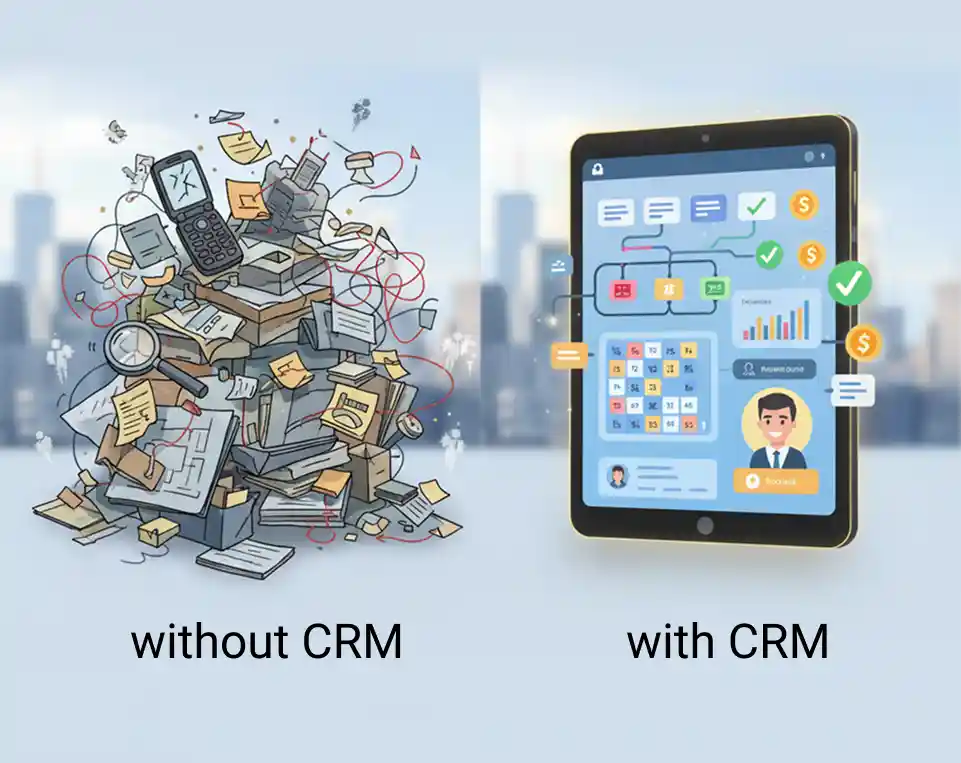_11zon.webp)
2025-10-31
In the highly competitive real estate sector, a client base is not just a list of contacts, but the most valuable asset of a real estate agent and agency. Proper and effective client base management (CBM) directly impacts the speed of deal closures, the quality of service, and the overall success of the business.
This article will outline the main principles, tools, and strategies that will help you maximize the potential of your client base in real estate.
Why is Effective Client Base Management Critical?
Maintaining a client base in real estate offers a number of advantages that go beyond simply storing contacts:
- Personalization of offers: A detailed client profile (their preferences, budget, inquiry history) allows you to offer only relevant properties, significantly increasing the likelihood of a deal.
- Increased loyalty: Immediate access to the entire interaction history enables a high level of service and builds long-term relationships, stimulating word-of-mouth referrals.
- Analysis and forecasting: Data on lead sources, the effectiveness of advertising channels, and the deal lifecycle allows for optimizing marketing budgets and forecasting sales.
- Knowledge retention: Even if an agent changes, all client information remains in the system, ensuring continuity of work.
Tools for Database Management: CRM System – The Foundation of Success
Manually managing a database in Excel spreadsheets or even notes is inefficient and risky. A specialized CRM system for real estate is the only correct solution.
Key CRM Functions for a Real Estate Agent:
- Centralized Data Storage: Collecting all contacts, call history, correspondence, and meetings in one place.
- Deal Management (Sales Funnel): Visualization of the client's journey from the first inquiry to closing the deal. This allows for timely identification of "stuck" leads and prioritization of tasks.
- Client-Property Matching: Automatic selection of real estate objects that match a specific client's requests.
- Reminders and Planning: Automatic notifications about the need for the next contact, property viewing, or meeting.
- Analytics and Reporting: Reports on agent effectiveness, lead sources, and the overall status of the sales funnel.
???? Note: If you are interested in how your potential clients (leads) enter your database and how to manage them, please visit:Managing Leads in CRM . This is an important step before starting work with the database.
Strategies for Effective Client Base Management
1. Quality, Not Quantity: Standardizing Data Collection
Every new contact should contain a maximum of useful information. Minimum set:
- Contact Details: Name, phone, Email.
- Lead Source: Where the client came from (advertisement, referral, website).
- Qualification: Property type (apartment, house, commercial), goal (purchase/rent), budget, mortgage needs.
- Priority: How "hot" the client is.
2. Regular Updates and Segmentation
Outdated data means wasted time.
- Data Cleansing: Regularly remove or mark duplicates and contacts that have not responded for a long time.
- Segmentation: Divide the database into clear groups:
- Buyers/Renters/Investors.
- "Hot" (actively searching) / "Warm" (considering) / "Cold" (past clients, owners).
- By property type (new build, secondary market, luxury real estate).
3. Automation and Communication
Use CRM for automation:
- Email Marketing: Set up automated mailings (digests of new properties for relevant segments, holiday greetings, useful content).
- Post-Sale Service: After closing a deal, set reminders to call the client in 3-6 months (to check if everything is okay, offer related services – insurance, renovations). This is the best way to get new referrals.
Conclusion: Client Base as a Growth Engine
Effective client base management in real estate is a discipline that requires the use of modern tools, such as CRM, and clear internal standards.
- CRM implementation ensures order and transparency.
- Quality data collection and segmentation allow for precise and personalized offers.
- Automated communication maintains connections and increases loyalty.
By investing time in structuring your client base today, you ensure a stable flow of deals and a competitive advantage in the real estate market tomorrow.
Recent post
Tagscloud
Subscribe our weekly subscription
Add some text to explain benefits of subscripton on your services. We'll send you the best of our blog just once a weekly.

_11zon.webp)